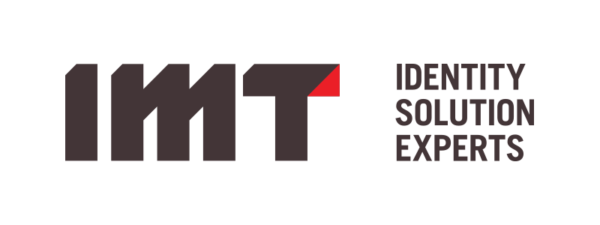Many of our customers are in various stages of cloud adoption. Some are just starting out, while others have graduated to building new solutions in the cloud to take advantage of innovative cloud-native architectures and technologies like serverless and machine learning.
Here we share our experience migrating existing Master Data Management (MDM) integrated solutions, and the lessons we’ve learned along the way to help you know what to consider when preparing to adopt cloud.
1. Assess Current Skill Strengths or Gaps
When developing a strategy to migrate MDM to the cloud, start by considering whether your organization should look to vendor-managed cloud services, or if your IT department can take on the architectural and operational responsibility of designing, deploying, and managing MDM in the cloud.
In some cases, your ideal strategy may combine both approaches. That may happen if you’re working with vendors who lack a fully managed MDM offering like IMT has. Your organization may already have the right mix of architectural, cloud economics, and operations skills to design and manage cloud infrastructure and applications.
Ask yourself:
- Who will design the architecture in a secure and scalable way?
- Who will model initial and run-time costs based on your MDM usage and volume?
- Do your resources have specific skills in a particular cloud environment?
- Are you equipped to monitor and dynamically increase/reduce service capacity to reap the optimal cost saving that cloud hosting can offer?
- Are there more cost effective and efficient cloud-native solutions that can replace legacy or underutilized application components?
Each cloud provider can offer training, guidance, and professional services; however an AWS cloud-certified partner like IMT can design the right architecture and assist with every aspect of your migration. IMT’s Cloud Center of Excellence, with certifications in Cloud Architecture, Operations, and Economics, has the experience to design well-architected cloud workloads that are best suited for master data management and integration solutions.
2. Employ the Right Security for Cloud
When creating cloud migration plans, you must consider not only environment setup, development, and migration time, but also time for detailed security architecture design. Do not underestimate the time required for IT and compliance reviews and approvals. The IMT team can help this step go more smoothly by bringing our HIPAA-ready cloud security best practices and reference architectures.
IMT’s Cloud Center of Excellence utilizes the AWS Well-Architected Security Pilar to inform a secure infrastructure design that includes encrypting data at rest and in transit as well as encrypted file stores. Provide network isolation and limit network traffic while using AWS tools like GuardDuty and Inspector to migrate and monitor security threats.
We further prescribe best practices around user provisioning to apply the principle of least privilege, and log all network and user activity for future auditing purposes, to name a few.
3. Design Availability and Scalability for Future Needs
One of the key benefits of the cloud over traditional physical hardware is the ability to dynamically scale as your processing needs expand or contract, without having to guess your future capacity. This dynamic scaling brings simplicity and unparalleled cost savings. In fact, this scalable approach boosts efficiency by an average of 62% compared to the average on-premise operation.
IMT applies best practices when designing cloud architectures for MDM including load balancing across multiple availability zones, auto scaling of additional application instances to support surge loads, and intelligent instance health checks that accurately assess application service and instance health.
Traditionally, database servers have been overprovisioned to ensure the best performance and avoid expensive expansion activities that can disrupt operations. Innovative on-demand database services, such as AWS RDS, allow you to provision what you need at the start, and dynamically allocate additional resources based on thresholds you set. Combining this with serverless resources gives you the opportunity to reap the greatest benefit from cloud economics.
Some application components may require refactoring to take advantage of these innovative, cost-effective services. For example, it may be necessary to right-size instances to be granular enough for effective auto-scaling. The good news is that IMT has deployed MDM on AWS, Azure, and IBM Cloud, and we have a toolkit of variations and modifications required for your optimal cloud deployment.
4. Architect for Rapid, Consistent Deployments
In today’s always-on world, you need rapid, repeatable, high-quality deployments. You cannot sustain long downtimes and extensive re-testing when changes are deployed.
For that reason, it’s critical to architect for ease of deployment, quality control, and consistency across environments. Based on the AWS well-architected approach, IMT takes an “infrastructure as code” approach, using Cloud Formation and Parameter Store to provision and configure AWS services.
5. Monitor for Performance and Cost
Make a regular practice of monitoring instance, data, and file storage sizes and types. Ongoing evaluation can reduce costs, in addition to configuring auto scaling groups that scale up and down with your needs. You can handle this regular practice, or delegate it to IMT, as your managed MDM service partner. Either way, the goal is the same: continuous monitoring to optimize performance and cost.
Get Expert Help For Your Cloud Migration
Don’t go it alone – there are many options, tools, and approaches to take in the cloud. The IMT team has the experience to prescribe the right cloud infrastructure, migration plan, and managed services to remove the guesswork and reap the benefits of cloud.
Want to learn more? Check out these resources, or contact Jim Dafnis at jim@imt.ca, IMT Cloud & Managed Service Engagement Lead to schedule your MDM Cloud Migration Assessment.
On-Demand Webinar: Start Planning Your Migration to AWS
Solution Brief: IMT’s Approach to MDM on AWS
Solution Brief: Secure MDM Migration and Integration in AWS
Solution Brief: AWS Security and Privacy for Healthcare Data
Blog: How IMT MDM Managed Services on AWS Can Optimize Your Operations
Blog: How IMT and AWS Protect Your Data in the Cloud





